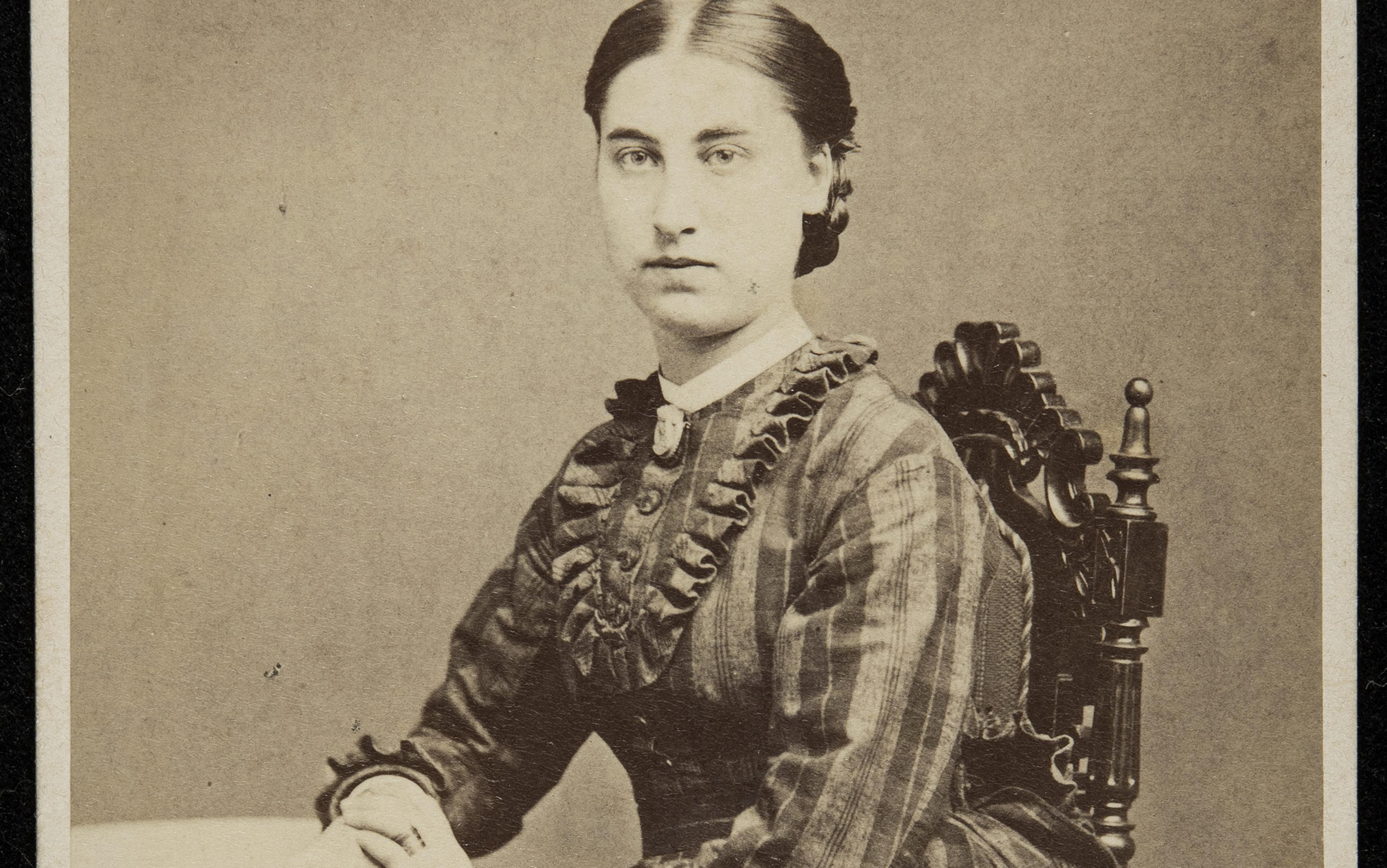Sunday 22 July 1888 was a glorious day in Copenhagen, warm and sunny. The city was celebrating an outdoor exhibition of the latest architectural ideas, thousands of people had filled the narrow cobblestone streets, all sweaty and waving the Danish red-and-white flag. The world seemed as beautiful as the future was promising. But for the Swedish author Victoria Benedictsson neither the world, nor the future, registered any more. She had rented a small room in the Leopold Hotel, just by Kongens Nytorv, and bought herself a razor knife and a handheld mirror. She’d spent the previous evening writing goodbye letters, then waited for the unbearably slow flow of time to pass midnight. Only then, with the mirror in one hand and the knife in the other, she cut her own throat. The hotel maid found her body in the morning.
Details of Benedictsson’s death detonated through the Nordic cultural bourgeoisie. The air was full of fragments of her life; one knew this, and the other that. Famous friends published obituaries in the Scandinavian newspapers, and her portrait was on display in bookstore windows. Speculations as to the cause of her death crossed each other like arrows of gossip. Bad finances was one theory, unhappy love another. In the scandalous newspaper Aftenbladet, the owner of the Leopold Hotel declared that Mrs Benedictsson was undeniably tense and hysterical. There were two beings in her, he claimed, that fought each other: her father had cultivated a wildness in her nature, while her mother taught her only to pray.
Meanwhile, her friend August Strindberg was almost starving. His marriage to Siri von Essen was falling apart, and he lacked a home as well as a steady income after having sunk himself in scandal with his sexually explicit essays. Accused and tried for blasphemy, he’d fled Sweden. Now, exonerated from the charges, he had a hard time finding publishers. He feared for his state of mind, but no one seemed to want him, not even the psychiatrists he consulted.
Strindberg and Benedictsson had become friends in Copenhagen. At first, Strindberg had reluctantly admired her, but when she turned out to be more successful than him (only the fourth woman ever to receive a sizeable grant from the Swedish Academy), his friendliness turned into fierce envy. As soon as he heard about her suicide, he began writing the play of his life, out of, as one friend put it, ‘an unrelenting and cruel cannibalism without the slightest hint of compassion’.
She was born Victoria Maria Bruzelius in the south of Sweden in 1850, at a time when women lacked human rights and the Western world was undergoing relentless change – a time Friedrich Nietzsche later compressed into three words: ‘God is dead.’ With industrialisation came capitalism. The creation of banks and factories followed, amid the birth pangs of communism and liberalism, constantly fighting over people’s minds. As The Communist Manifesto (1848) states with poetic clear sight:
All fixed, fast-frozen relations, with their train of ancient and venerable prejudices and opinions, are swept away, all new-formed ones become antiquated before they can ossify.
Frightening times – and strangely polarising, for, if God is dead, what takes God’s place? Science, research, rationality, some answered triumphantly. Loneliness and rootlessness, said others. Or, immorality and capitalism. God is dead, long live modernity!
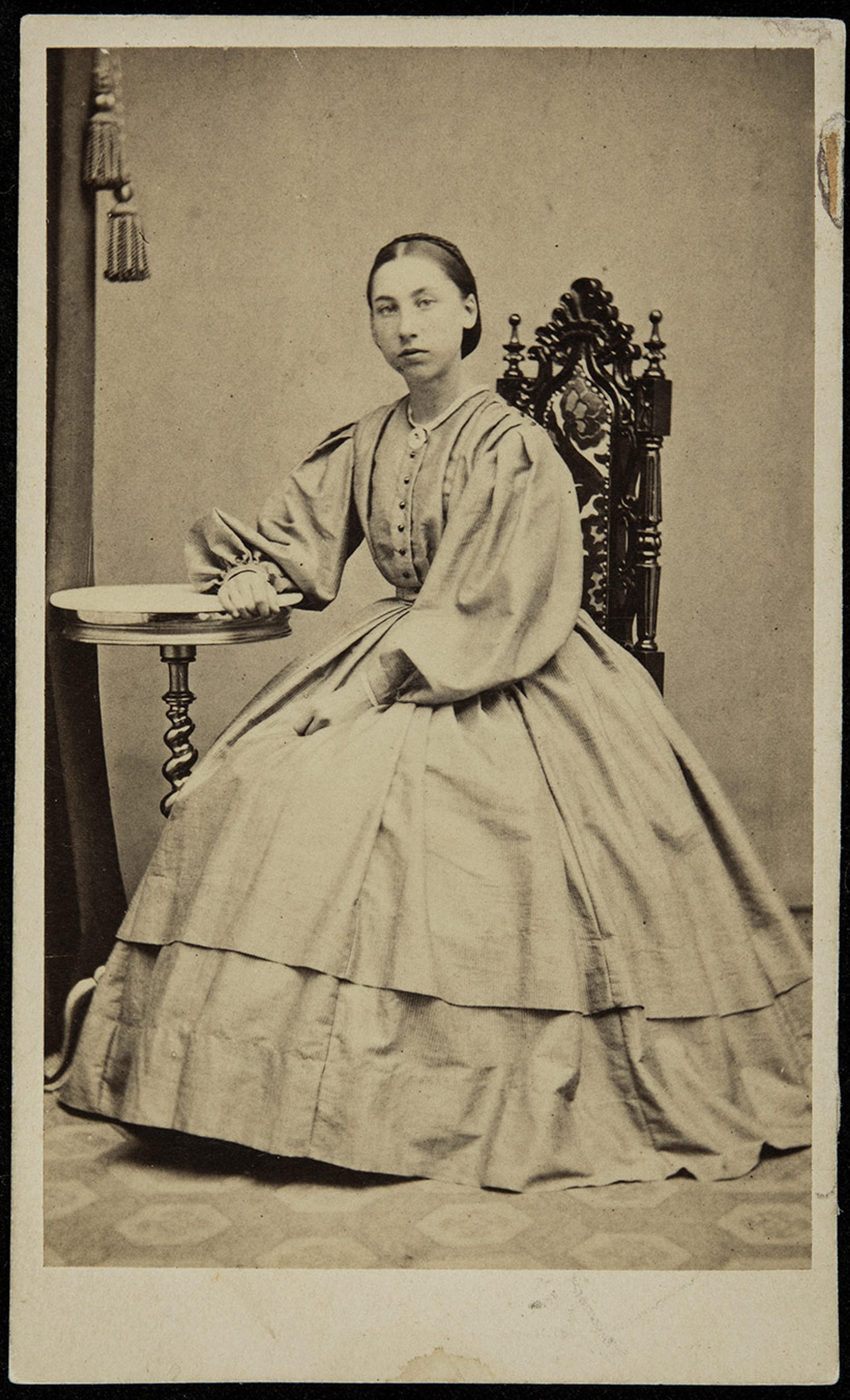
Victoria grew up in a village so small one could blink and miss it on passing though. Her parents were well educated but lacked money. On top of that, they were old. An awkward, lonely child, her mother taught her most of the skills a girl of the bourgeoisie had to know – French, piano, sewing, embroidery – plus all there was to know about God’s truth and punishment. Her father, on the other hand, seemed to be the king of freedom. The two of them would ride over the open fields and he’d teach her to wrestle, whistle and shoot. Galloping to keep up, Victoria duly wrestled, whistled and shot, doing her best to be the son her father longed for.
For a time, both were happy, before a singular moment when everything changed. The sensitive young girl watched her father realise – she literally saw it happen – that, indeed, she was not a son. She registered the change of expression in his eyes and interpreted it as rejection and contempt. From that moment, she not only hated being a girl, she despised the characteristics within herself that she identified as feminine, and couldn’t stand women in general.
She identified with Lady Macbeth, a woman who had committed the worst of crimes
She grew tall (183 centimetres, or just over 6 feet) and strongwilled, determined to be a painter. Twice she asked for her father’s permission to study art and was twice denied. The second rejection broke her down. Now 20, she deplored the options ahead of her: working as a governess or staying at home as an unmarried daughter. So, when an old suitor turned up – Christian Benedictsson, 30 years her senior, a widower and father of five – she married him. With a postmaster for a husband, she saw opportunity; being a married woman would grant her a certain amount of freedom. Yet it took just months for her to realise that she’d merely exchanged one dependency for another. Later, she described the marital institution as state-sanctioned prostitution; her husband was obliged to support her for the rest of her life, while she, in turn, was obliged to provide her body.
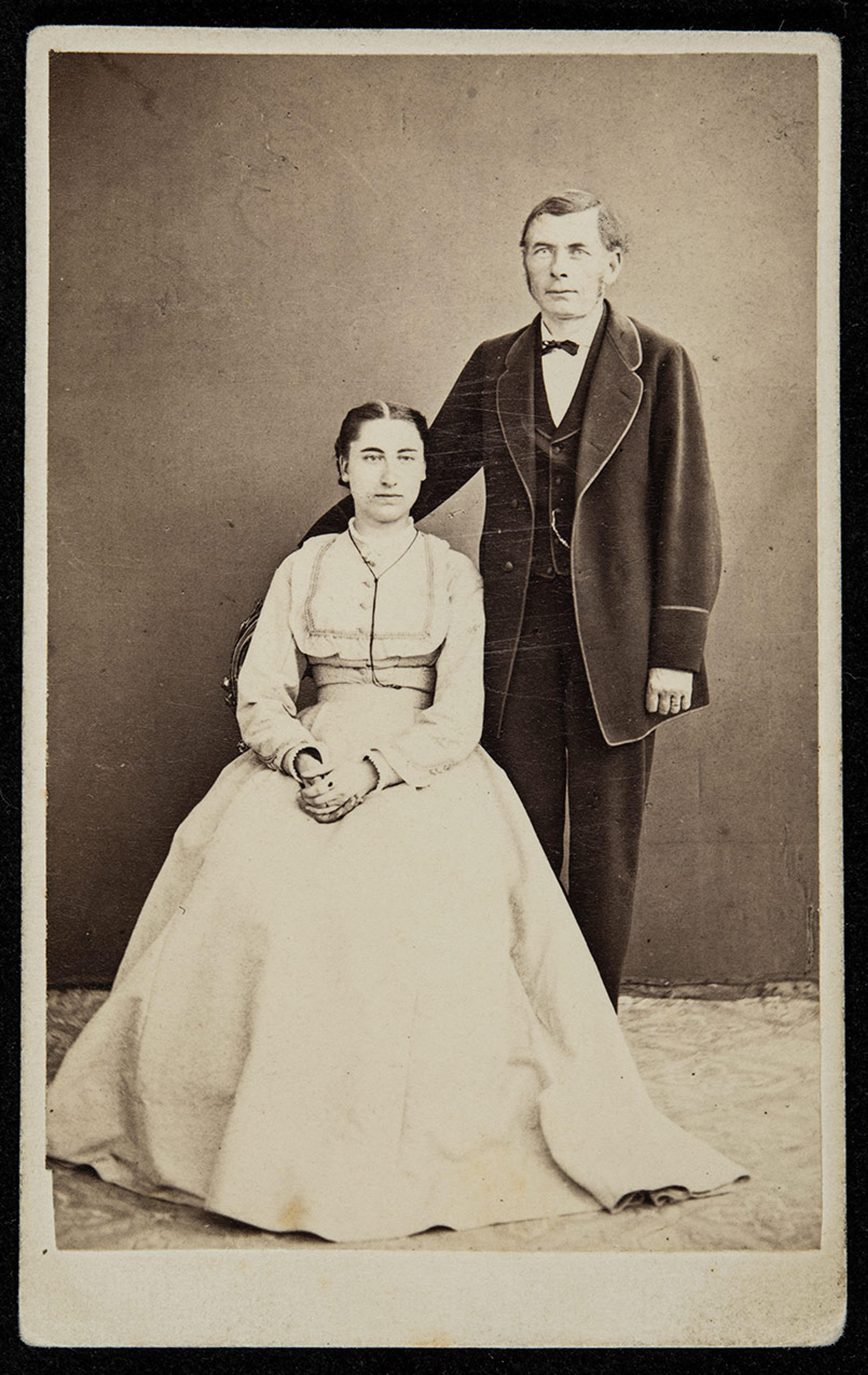
Victoria Benedictsson proved an excellent stepmother, but when she had a daughter of her own, there was no affection. The baby girl was the fruit of an old man’s lust. When she became pregnant a second time, a dark mood took hold of her; for several weeks of the pregnancy, she wouldn’t eat. Born on 22 July 1876, her daughter was christened, named Ellen, then died. Benedictsson’s diary notes at the time went silent. But there are clues to her state of mind, to the guilt and relief that consumed her. From that time on, she identified with Lady Macbeth, a woman who had committed the worst of crimes.
Benedictsson’s private notes were often made in a cipher of her own invention, to ward off prying eyes. They reveal that village life bored her. That she found people narrowminded, unintelligent and gossipy. In secret, she started to write short stories inspired by Charles Dickens, sending them to newspapers under male pen-names. Although rejected, she received good advice along the way: study your surroundings, young man. Get to know your world and the people in it.
Skåne was her landscape: the windy fields, muddy village streets and forest groves where lily-of-the-valley grows and where people go hunting for rooks, those metallic black birds that obscure the sky when they take off in flocks. In response to a world transforming at steam-engine speed, people were nostalgic for premodern society: the countryside untouched by time, which they perceived as authentic (much like now). Benedictsson’s short stories about the people of Skåne and their ways, published under the pen name Ernst Ahlgren, were an immediate hit. ‘Ahlgren is the future and hope of Swedish literature,’ the critics cried, not knowing that Ahlgren was a 33-year-old married woman with six children. An unexpected star was born.
For much of the 1880s, Scandinavia was engaged in a heated cross-border literary debate about male and female sexuality, power and subordination, set off by the Norwegian playwright Henrik Ibsen’s play A Doll’s House (1879) – and fuelled by the book The Elements of Social Science (1861) by the British doctor George Drysdale. Ibsen questioned the gilded cage of bourgeoise women, lacking all rights but the one to please others, while Drysdale argued that men’s and women’s genitals were muscles that needed regular exercise in order not to atrophy.
Scandinavian intellectuals began asking if women should be allowed to have sex before marriage, learn about their bodies, masturbate? Should men stay chaste until their wedding night, or would they die if their urges were held back? (A thesis that Strindberg supported, by the way.) At the centre of it all stood the Danish literary critic Georg Brandes, the man whom Benedictsson would come to love in the last two years of her life. He’d risen to fame translating John Stuart Mills’s The Subjection of Women (1869), to which he added a preface, pleading between the lines for women’s erotic rights, as a complement to Mills’s advocacy of women’s economical, legal and social rights. Brandes’s translation swept like a firestorm through Scandinavia, as tens of thousands of women found in it words for describing their predicament. He became their unofficial leader, and a role model for working-class reformers and students who yearned for a less rigid society.
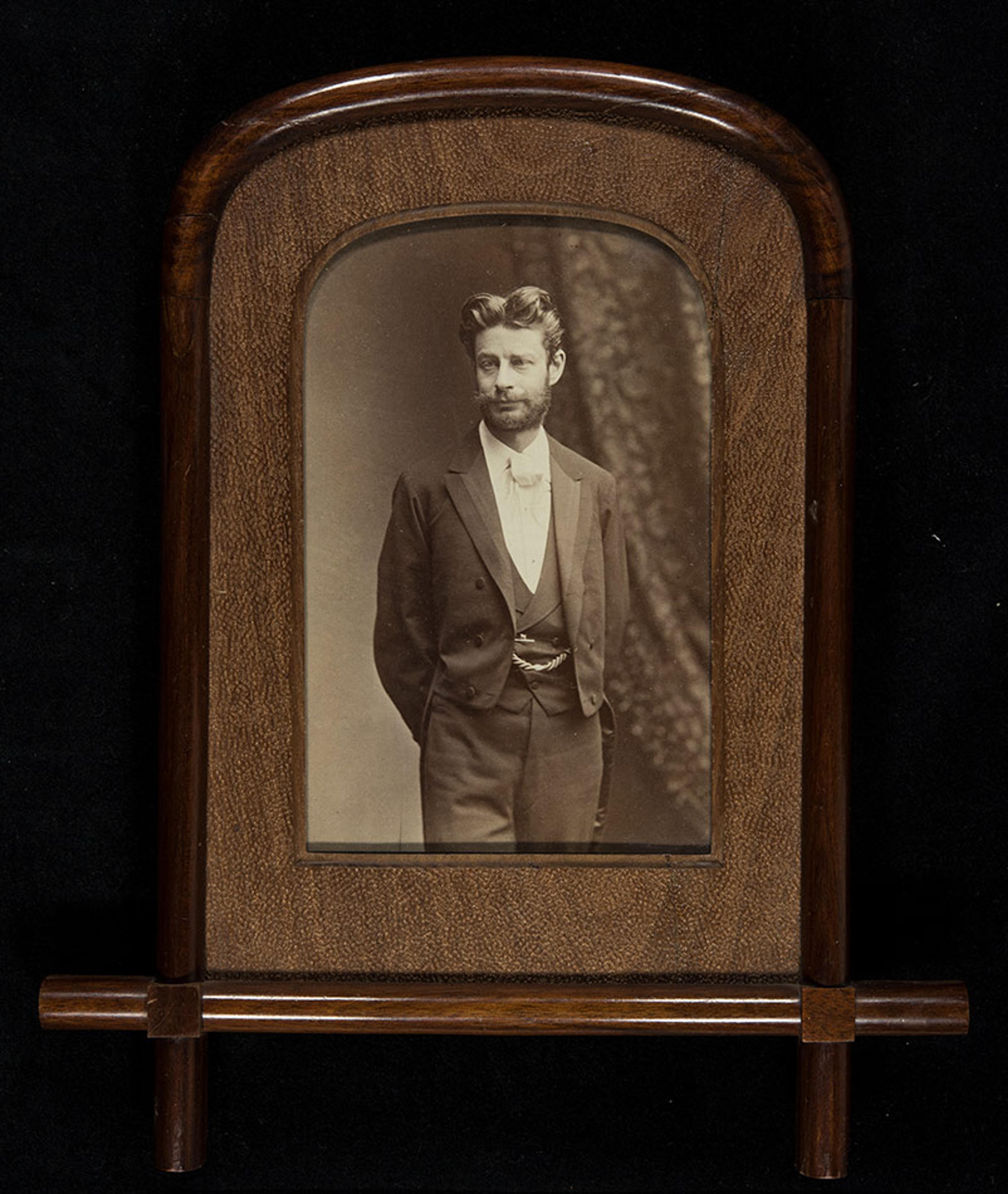
Brandes became the most important critic in northern Europe. He introduced Fyodor Dostoyevsky to the Nordic countries and discovered Nietzsche. (As proof of his central position in European culture, Brandes’s daughter kept a ‘friend book’ where admirers left greetings. There are signatures by Otto von Bismarck, Maurice Ravel, Claude Monet, Albert Einstein, Henry James, Thomas Mann, Auguste Rodin, Rainer Maria Rilke, Igor Stravinsky, Leo Tolstoy, H G Wells, Émile Zola and Stefan Zweig. Sigmund Freud personally sent his book on dream interpretation to Brandes.)
Having gained confidence and prestige as Ernst Ahlgren, she transformed herself into him altogether
During Benedictsson’s lonely years of writing in the attic of the postmaster’s house, she read every word Brandes wrote. He was a beacon of light in the intellectual backwaters of the Swedish countryside – a guide to the higher education she coveted, but was denied because of her gender. ‘I have a man’s brain in a woman’s body,’ she noted.
When she published her first novel, Money (1885), she found instant celebrity, never mind that a jealous neighbour denounced her, revealing her true identity to the press. Having gained confidence and prestige as Ernst Ahlgren, she decided to transform herself into him altogether. After all, Ahlgren wasn’t obliged to kiss Postmaster Benedictsson. Ahlgren could sit up all night smoking, eating grapes and discussing literature with his newfound literary friends.
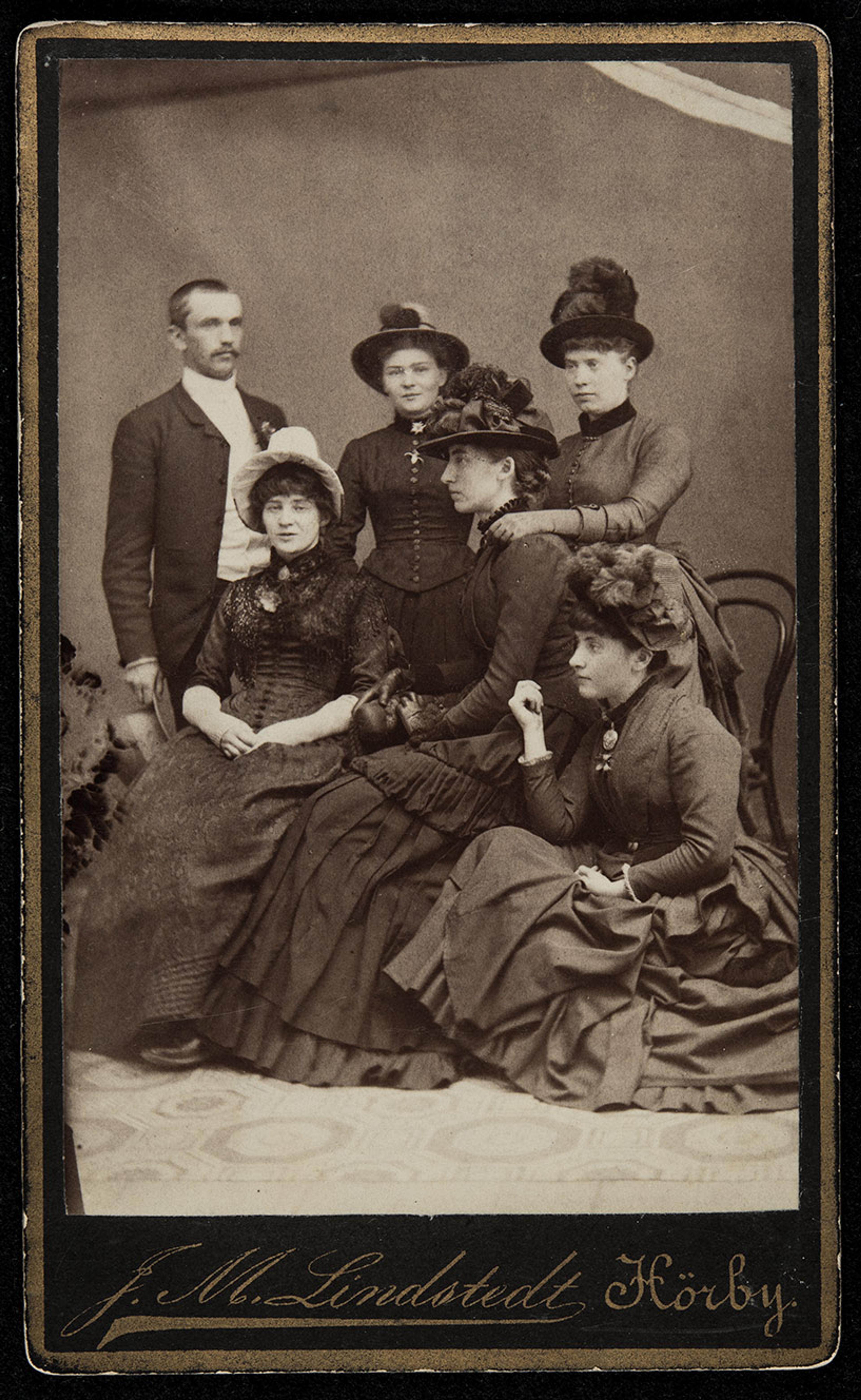
Benedictsson’s transformation wasn’t so much about becoming a man, as becoming free. Like a female Houdini, she started breaking out of the corseted cage of womanhood: the stepchildren could take care of themselves, her young daughter was left to her grandmother. The old postmaster found himself forced into a deal he didn’t want: freed from the obligation to support her, he lost his right to have sex with her. Finally, the village where they lived, with all its small-town busybodies, was so sharply dissected in a short story by Ahlgren, that the male villagers clubbed together to threaten her with physical violence. Step by step, the old ties were cut. Victoria became Ernst. She – or he – set off to Stockholm and was celebrated by the cultural elite. Unusually tall, dark-haired and always dressed in black silk, maybe to conceal the fact that she hardly had any money to keep up with fashion, Ahlgren even flirted. At 35, she discovered what turned her on; only the intellectual connection between equal minds awoke her sensuality.
Ahlgren seems to have moved back and forth along the gender line seamlessly. Her male friends called her ‘brother Ernst’ and she frequently signed her letters with the cross-gender ‘mother Ernst’. One friend described her as:
… a woman without anything on the outside revealing what goes on inside. He takes pride in hiding it and the whole world thinks Mrs Benedictsson is a lovely person. But to himself, Ernst Ahlgren laughs at them all – and portrays them in his books.
Note the fluid pronouns. But Stockholm ultimately proved to be as petty bourgeois as Benedictsson’s home village. She was free, but incredibly lonely. In a bid to find others as ‘free and wild’ as herself, she left for Copenhagen, hometown of Brandes.
In October 1886, Ahlgren invited Brandes to her room at the Leopold Hotel and, politely, he came to visit. He had heard of her, after all, and knew that they shared literary ideals. They discussed literature, the current debate on sexuality and marriage; he confided in her about his mistresses and marriage. She proved a good listener. He told her he liked her. Imagine that! The postmaster’s wife had turned herself into a progressive, celebrated writer, and was now in an intimate, face-to-face conversation with her idol. She tried to stay cool but fell in love. As soon as Brandes left, she jotted down every word and every pause, like sheet music. All must be documented. They soon met again. Then they kissed.
Her private notes, which had consisted of quotes, outbursts of anger or joy, or anecdotes to use in her writing, now shifted into the purest autofiction, before the genre was coined. Narrating in the past tense, with pace and with structure, she tells the story of a great man who comes to visit an intelligent woman in a hotel room. They talk, they kiss and then something more happens. Ahlgren fell in love, to be sure. But it’s equally true that she was in search of working material. She saw herself as an eater of other peoples’ lives, and she had stumbled upon a treasure. Meeting by meeting, she created a story about manipulation and subordination, about sexuality, hatred, lust and fear. She extracted every ounce of their relationship, and turned it into literature. Karl Ove Knausgård couldn’t have done it better.
The real blow came when her second novel was published and he called it a ‘ladies-book’
One painful twist to the story appeared early on. The very reason their meeting took place was that Ahlgren had made it as an author, and Brandes was curious. But while she’d found success by breaking out of the gender cage, it became apparent that Brandes hadn’t the slightest interest in a woman who had dismantled her femininity. To keep his attention, she must turn herself back into a woman. She cursed herself for betraying herself, nevertheless she changed her hair to please him, and stayed in her room just in case he might show up. She also started keeping a record of his friends and mistresses, then tried to befriend them. Was she a woman in love? A writer who used herself to make art? An intellectual stalker? The answer to all these questions is yes.
After almost a year of talking and kissing, Brandes seemed to lose interest. He had repeatedly asked for sex – he would never seduce her, he said, he wanted sex only if she wanted it just as much – but she’d declined. Now, she panicked and offered him the last thing she had left to give, or so she saw it. They had sex a couple of times, and then he truly lost interest. Still the real blow came when her second novel was published and he called it a ‘ladies-book’. Ahlgren, whose mark of pride lay in writing matter-of-factly and without sentiment, ‘like a man’, was devastated. On top of that, Brandes’s brother Edvard, unaware of their relationship, slaughtered the book in a review in the daily Politiken. Now, it all stood clear to Benedictsson. She wasn’t enough of a woman to be loved by Georg Brandes, nor a good enough artist to be respected by him. She sought out her father’s revolver and made sure it worked.
Meanwhile, Strindberg watched her closely. They both stayed for extended periods at the Leopold Hotel, shared friends, and spent time together. He was intrigued by her, unsure what kind of creature she really was. A woman? No. But not a man either.

Ahlgren dismissed the idea of suicide by gun, worrying that she’d only end up hurt, not dead. Instead, she got a hold of morphine. She informed a close friend of her plans and asked him to be there, as she waited for death. Not surprisingly, the poor bloke couldn’t handle the situation, so he knocked on Strindberg’s door and told him of the goings-on down the hotel corridor. Strindberg was suddenly wide awake and intensely curious. It turned out that Benedictsson threw up and, this time, failed to die. Condemned to survive, she took off for Paris, visited friends, even published a book of short stories (which Brandes quite liked). She also had a huge success with a play in Stockholm, but nothing seemed to help. In the summer of 1888, she booked a room at the Leopold once more, bought a razor and a handheld mirror, and patiently awaited 22 July – the birthday of her baby girl who died – turning it into the last day of her life. Strindberg immediately got down to work on the play Miss Julie:
Someone commits suicide. ‘Business worries,’ says the business man. ‘Unrequited love,’ say the ladies. ‘Physical illness,’ says the sick man. ‘Shattered hopes,’ says the failure. But it may well be that the motive lay in all of these things, or in none of them, and that the dead man concealed his real motive by emphasising quite a different one that shed the best possible light on his memory.
In his play, Strindberg underlines the upbringing of the drama’s unfortunate female protagonist, raised as a boy and thus become half-woman, half-man. The emancipated woman, he continues, is not a ‘good species’ but must self-destroy. Subsequently, he indicates a suicide by the female lead – with a razor. Just 19 days after Benedictsson’s death, Strindberg sent the finished manuscript to his publisher. The dead Victoria Benedictsson had become Miss Julie.
Benedictsson had fed on her own fate like the ouroboros forever swallowing its own tail
Beyond the fact that he stole Benedictsson’s gender-ambivalent childhood, the combination of both sexes in her grown-up identity, and the details of her gruesome suicide, she doesn’t seem at first glance to have much in common with the fictional Miss Julie. The protagonist of Miss Julie is an upper-class woman who manipulates the valet Jean into sex, and then takes her own life. Nevertheless, the core of Strindberg’s drama, and of both the real and the fictional woman’s fate, is the lifelong struggle between strength and weakness that inevitably leads to her downfall.
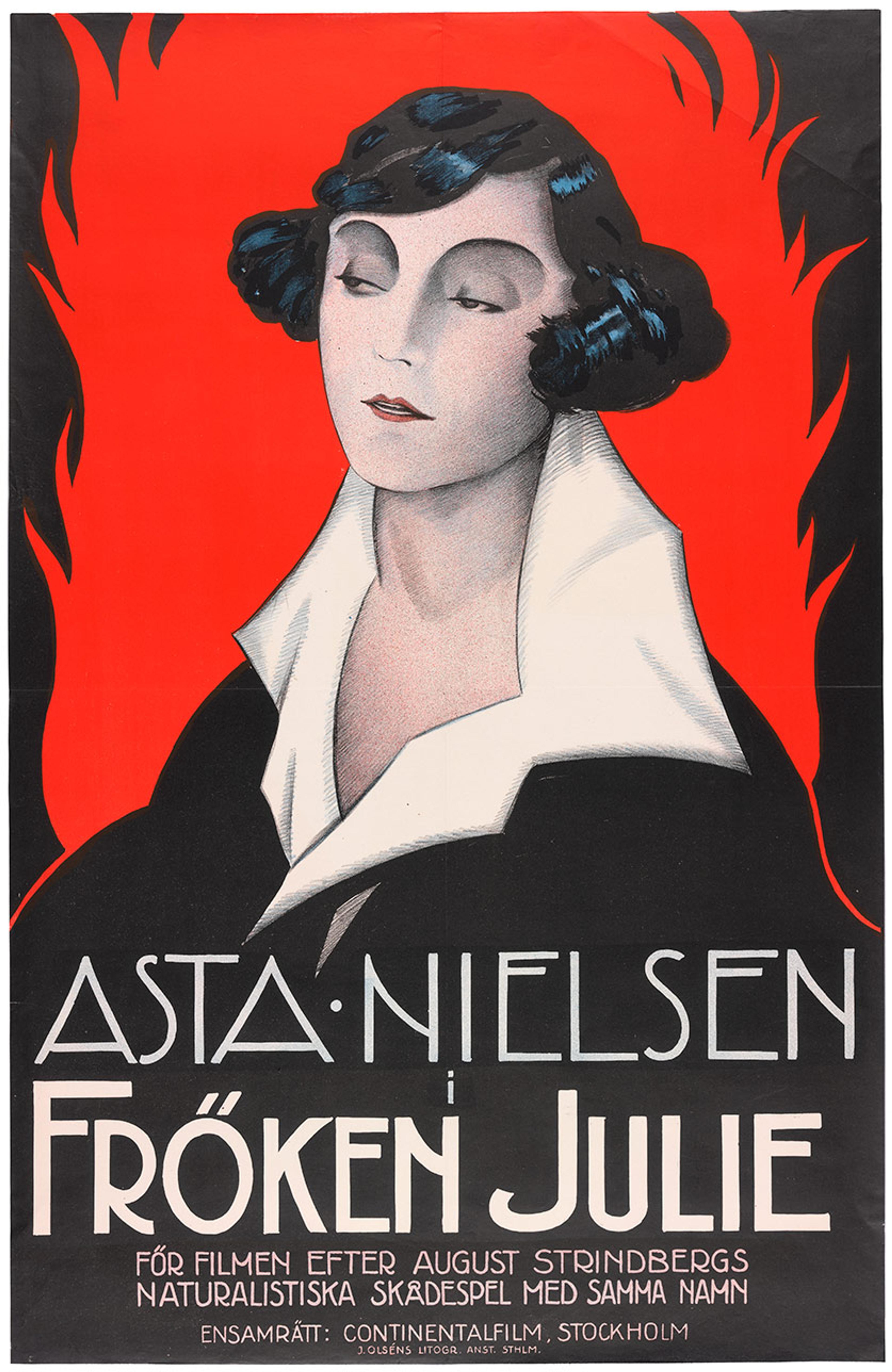
Benedictsson would probably have approved, even applauded Strindberg’s theft. After all, she’d trained herself to become an almost scientific consumer of other people’s fates. She admired an objective eye, and always tried to ‘dissect’ her feelings and thoughts in order to become a better writer. This was the creed of modernity. Artists were to stay true to reality and shun the sentimental or false, according to its leading apostles – Ibsen and Brandes. But, above all, Benedictsson had fed on her own fate like the ouroboros forever swallowing its own tail. Over the last two years of her life, her diary transformed into the novel of her life as she was living it, with a delay of only a few days.
The hatred and euphoria she experienced transformed into text so fresh it steamed like the meat of a recently slaughtered animal, as she herself put it. This was literature quite inappropriate for a woman to express, and unthinkable to publish at the time. Only by leaving it to a male friend, who published it in portions over the next 30 years, would it become a bestseller, as forceful as Strindberg’s novel The Defence of a Fool (1893) would be. Only Benedictsson’s fool was a woman – her own being, her curse and her prison. Taking her own life was the final escape.
